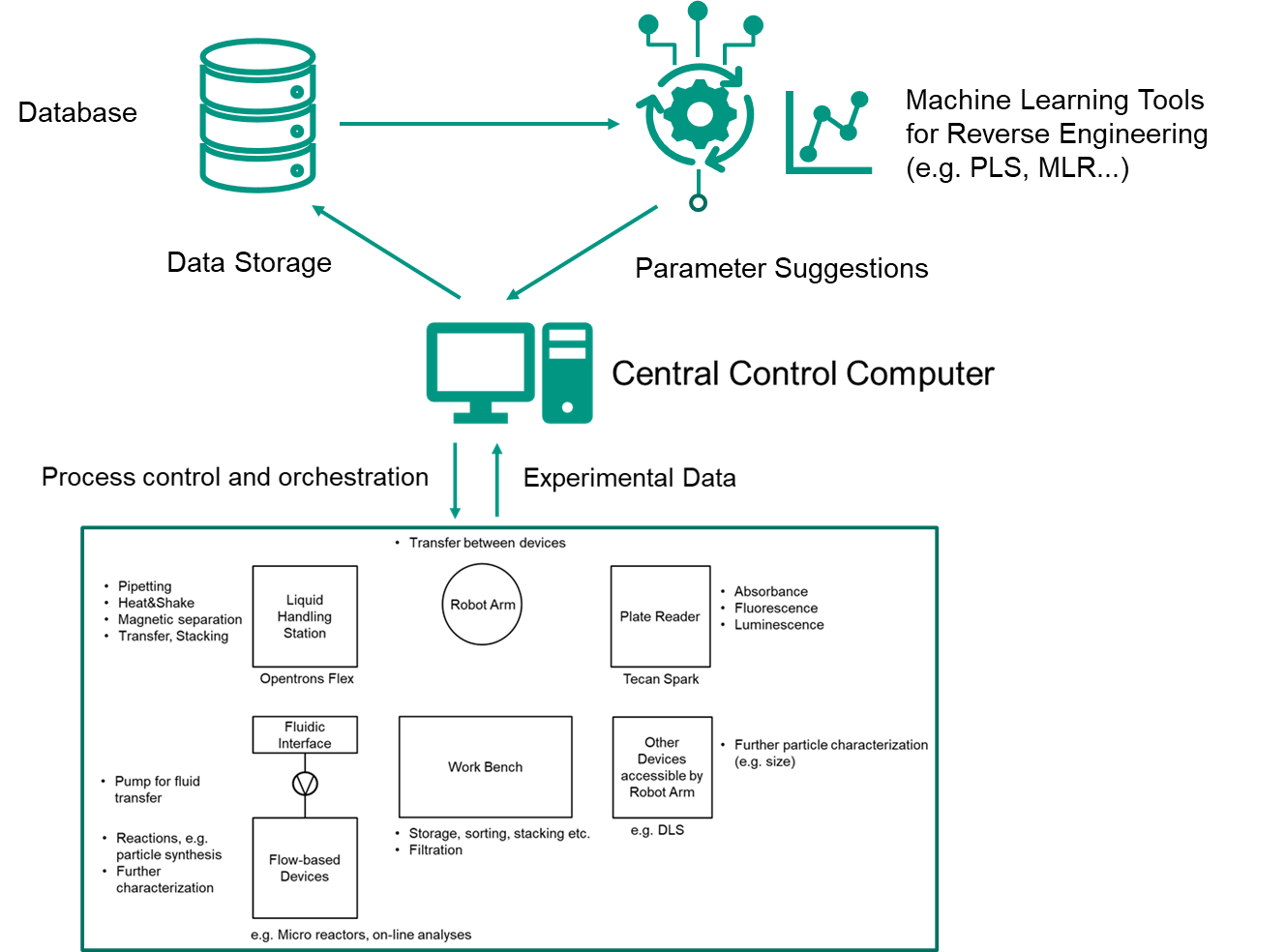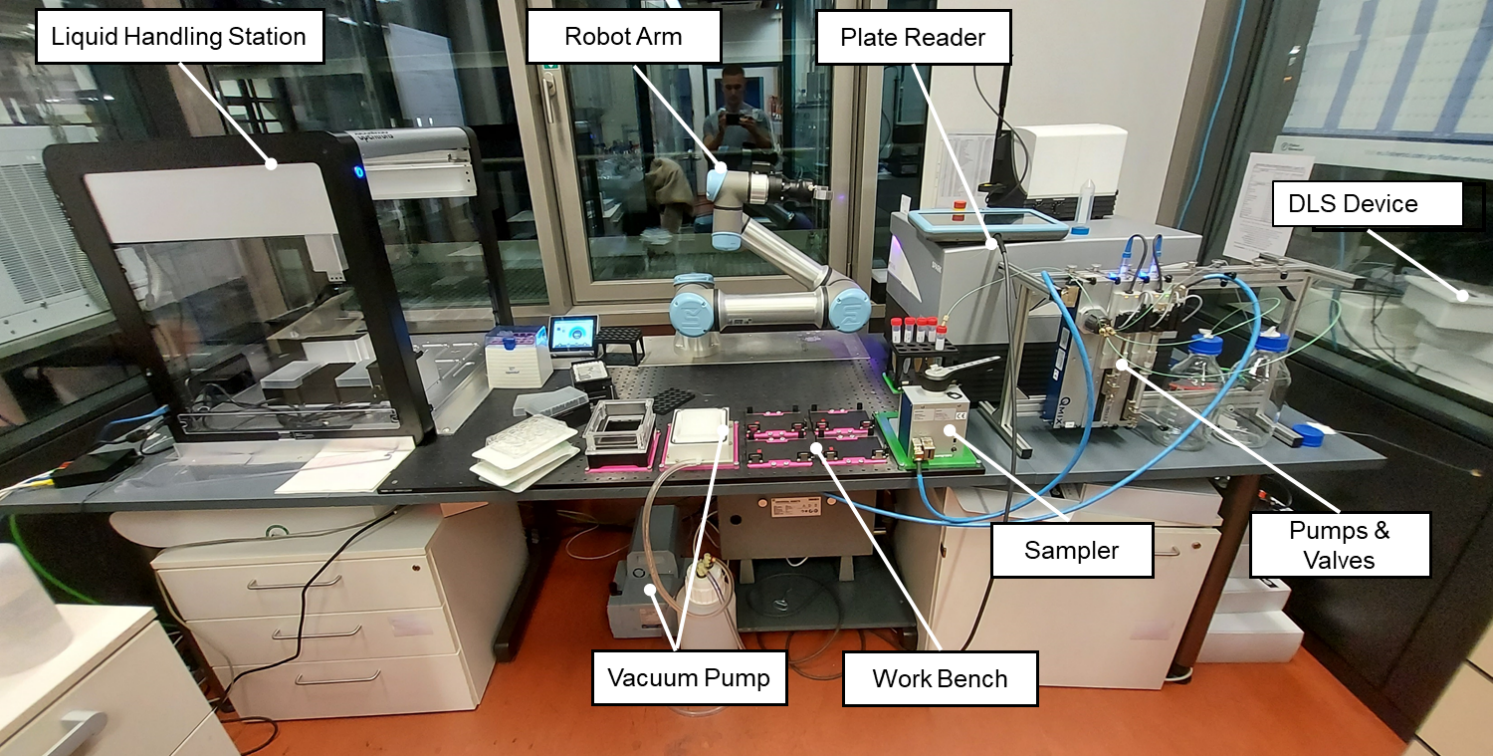
M.Sc. Sebastian Putz
- PhD Student
- group: Bioengineering and Biosystems
- room: 223
- phone: +49-721-608-2-8108
- fax: +49-721-608-2-3478
- sebastian putz ∂does-not-exist.kit edu
Research
Hierarchically structured, particulate biomaterials: Automated synthesis and characterisation, autonomous optimisation and application demonstration
Functionalized micro- and nanoparticles are of fundamental importance in bioanalytics, as they can serve as carriers for bioaffine ligands and surfaces and thus enable specific interactions with target molecules. This comes into play, for example, in magnetic separation, where they enable selective purification of biomolecules, and in immunoassays and molecular diagnostics, where they serve as key elements for sensitive detection methods. Current and developing applications in the fields of bioanalysis and biomedicine lead to diverse and sometimes contradictory requirements for the particulate biomaterials used. The synthesis of nano- and microparticles with controlled size, shape and morphology, based on defined molecular and/or nanoscale building blocks, is already an important technological process that is used, for example, in the painting, cosmetics and food industries. The "bottom-up" approach for the controlled synthesis of particle materials is mainly based on the mechanism of reaction and self-assembly in suspension reactors as well as on microfluidic processes. However, application-specific material development is very time-consuming and resource-intensive due to the large number of influencing factors and the complex mechanisms involved.
The aim of this project is to implement and demonstrate an automated platform for the synthesis and characterisation of particulate biomaterials in order to achieve significantly accelerated material development. The targeted production and modification of multifunctional nano- and microparticles has the potential to create revolutionary tools and technologies for diagnostics, therapy and research in the field of life sciences. By adding machine learning tools, the robot-assisted, automated platform becomes an autonomous, i.e. self-learning, system. Using optimisation algorithms and reverse engineering modelling tools, the manufactured particles are iteratively optimised with regard to the required target properties. As examples of autonomous, highly accelerated material development, particulate hybrid materials for electrochemical bioassays as well as multiplex fluorescent and electroluminescent particles are produced with the platform and tested in the application.
Theses:
Bachelor's and Master's theses can be assigned at any time. Depending on the focus of interest, the topic of the thesis can be adapted and, of course, your own wishes can be taken into account, e.g. whether you prefer to do a lot of programming, automated or experimental work.
If you are interested, please contact us by e-mail (see above). We can then discuss specific topics in more detail in a personal meeting.

Figure 1: Schematic representation of the autonomous synthesis and characterisation platform

Figure 2: Photo of the current laboratory set-up
